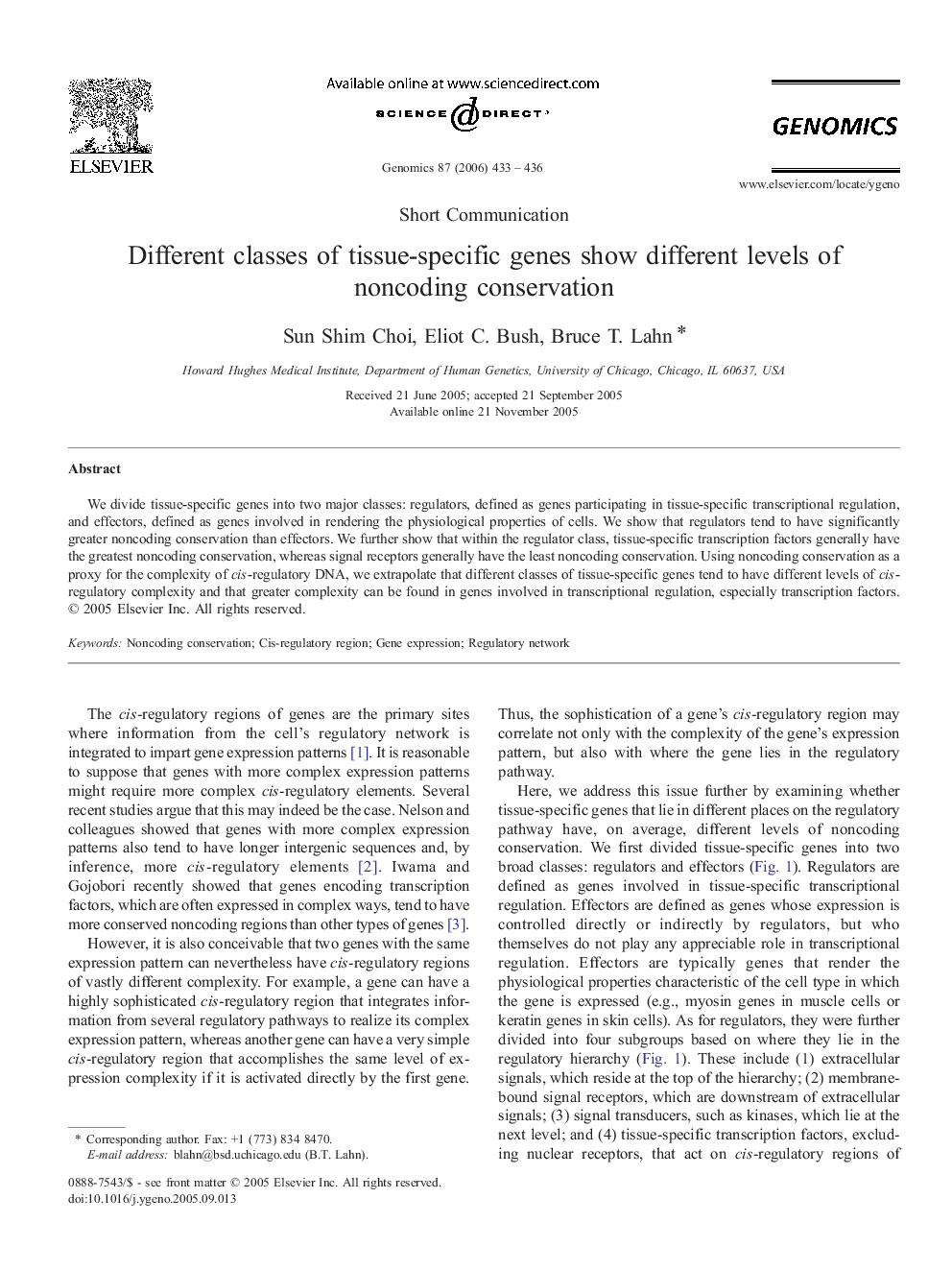| Article ID | Journal | Published Year | Pages | File Type |
|---|---|---|---|---|
| 2821668 | Genomics | 2006 | 4 Pages |
We divide tissue-specific genes into two major classes: regulators, defined as genes participating in tissue-specific transcriptional regulation, and effectors, defined as genes involved in rendering the physiological properties of cells. We show that regulators tend to have significantly greater noncoding conservation than effectors. We further show that within the regulator class, tissue-specific transcription factors generally have the greatest noncoding conservation, whereas signal receptors generally have the least noncoding conservation. Using noncoding conservation as a proxy for the complexity of cis-regulatory DNA, we extrapolate that different classes of tissue-specific genes tend to have different levels of cis-regulatory complexity and that greater complexity can be found in genes involved in transcriptional regulation, especially transcription factors.
